
HaiKulture
gamer level 10
110011 xp
110011 xp
followers
170
170
Use my invite URL to register (this will give me kudos)
https://boardgaming.com/register/?invited_by=haikulture
profile badges




recent achievements

Gamer - Level 10
Earn Gamer XP to level up!
Earn Gamer XP to level up!

Chief Inspector
Follow a total of 40 games
Follow a total of 40 games

Explorer - Level 6
Earn Explorer XP to level up by completing Explorer Quests!
Earn Explorer XP to level up by completing Explorer Quests!

Advanced Reviewer
Review 13 games and receive a total of 980 positive review ratings.
Review 13 games and receive a total of 980 positive review ratings.
Player Stats
Critic (lvl 3)
1305 xp
1305 xp
Explorer (lvl 6)
7084 xp
7084 xp
Professor (lvl 4)
1895 xp
1895 xp
Reporter (lvl 6)
7675 xp
7675 xp
About Me
*Snarky Interwebby Personality*
*Geek Chic Girl*
*Freelance Writer and Blogger of Short Attention Span Poetry and Self-Referential Meta Meta-ing Essayery*
*Anti-Social Networker*
*Pencil and Paper to Pixel Gamer*
*Deus Ex Machina for Various Electronica*
*** *** *** *** *** *** *** ***
Gaming wise you'll find me drooling over and dreaming about:
[Deckbuilders]
[Card Games]
[Variable Power Games] [Dungeon Crawl Lites]
[Pathfinder]
[ANYTHING by Flying Frog Productions - that's like a back rub at my tabletop]
*** *** *** *** *** *** ***
Twitter: @HaiKujo
[***End Transmission***]
*Geek Chic Girl*
*Freelance Writer and Blogger of Short Attention Span Poetry and Self-Referential Meta Meta-ing Essayery*
*Anti-Social Networker*
*Pencil and Paper to Pixel Gamer*
*Deus Ex Machina for Various Electronica*
*** *** *** *** *** *** *** ***
Gaming wise you'll find me drooling over and dreaming about:
[Deckbuilders]
[Card Games]
[Variable Power Games] [Dungeon Crawl Lites]
[Pathfinder]
[ANYTHING by Flying Frog Productions - that's like a back rub at my tabletop]
*** *** *** *** *** *** ***
Twitter: @HaiKujo
[***End Transmission***]
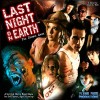


































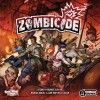
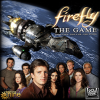

















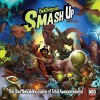

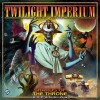


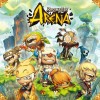































































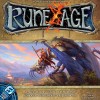













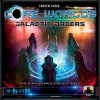



































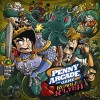











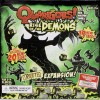




























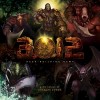






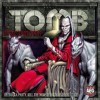




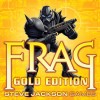










![Go to the Level 7 [escape] page Go to the Level 7 [escape] page](https://boardgaming.com/wp-content/uploads/2012/08/Level-7-escape-100x100.jpg)
























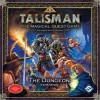





























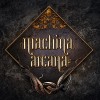
























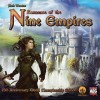





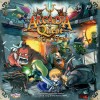









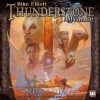
















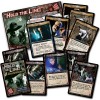
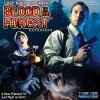








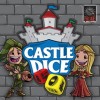
































































































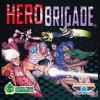




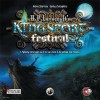



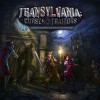






















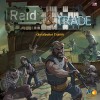


























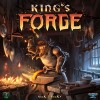

















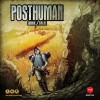





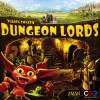



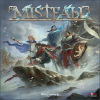














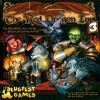























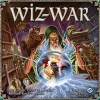












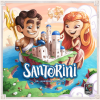


























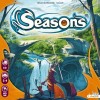
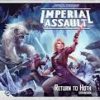


















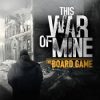































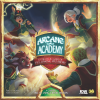





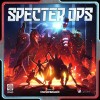




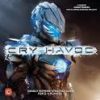











































Millennium Blades
The hype train is pulling into the station and it’s : MILLENNIUM BLADES!
Level 99, known for their ambitious overages, decided to create a faux thousand year old CCG to rival The Magic and The Poke, but didn’t. They went a step further and created a game about playing a faux thousand year old CCG by playing it, but not.
The result is a ‘best of’ Millennium Blades in one big box. No commons. No fillers. No swamps. It’s bursting with professional tournament heavy hitters. It’s a board game that’s a card game that simulates a collectible card game. In fact- it simulates CCG Life.
Read on True Be-Bladers…
Between a Clock and a Card Place
Millennium Blades simulates the CCG world from booster buying and deck tinkering through tournament play with gratifying sweeps and agonizing defeats. The game plays in about two hours through 3 repetitions of two distinct phases: The Deck Building Phase(A real time – dare I say it – ‘Card Gathering’ round) and The Tournament Phase(A mechanically simple yet deep and puzzley tableau card play round).
Before getting into the gist and gel of the phases, let’s talk about The BLADES DECK.
Not a deck. Not your deck.
THE BLADES DECK.
All caps.
Respect and gravitas.
Millennium Blades is a card game about cards. A lot of cards. A capital D-E-C-K deck.
The true centerpiece of Millennium Blades is the BLADES DECK.
This main deck is composed of a foundation of 118 Core cards (solid anchor cards, tournament advantage accessories, and the rare gem of a find) shuffled with 12 swappable mini decks of 12 cards representing boosters and expansions (decks focusing on various mechanics and themes).
That’s the BLADES DECK.
A monolith of 250+ cards sitting smack dab in the center of the table.
And it is glorious!
How does one purchase, ponder, and paw through all that card stock?
DECK BUILDING
The deck building phase is a real-time phase of 20 minutes broken into shifts of 7, 7, and 6 minutes where players can take any action they want, as much or as little as they see fit, until time runs out. You have oodles of options in those 20 minutes which paradoxically seems like plenty of time and feels like not enough. There’s plenty of chaos as time ticks down and you’re trying to cobble together some order in constructing a tournament ready deck.
Looking for that perfect world beating card? Purchase a face down card blind from the STORE with stacks of fat cash. Sure you only know the general set, but tearing open that metaphorical booster might just let you sweep the coming tourney. You might find an Accessory to give your faltering deck a jolt against the Cards of War. A Deck Box could give you mad points, if you fill your hand and tournament tableau with just the right cards. You know, you just know in your Heart of Cardness that when you flip it over that this is the Grail Card you have been cash questing for…
Or not…
Hit the AFTERMARKET and sell that useless bit of cardage for some quick cashola. While you are there, make sure to peruse the face up throwaways from other players. You know what you are getting here and they may have foolishly put up for sale exactly what you need. Or perhaps they are holding a card most useful and with a smile, a little coercion, and coinage you can make a trade. Tuck away those ‘maybe usefuls’ in your Binder card pool for later. Have you been accumulating a little too much starchy cardboard fat? Burn away your excess by building a Set Collection for some spare endgame VP or fuse a wad of cards into a draw from those tempting promos decks.
The clock’s ticking – but there’s time to buy one more card, right?
Hold on – I might want to swap something in from the binder that might be just a little better now that I think about it…
Wait! Why am I standing here typing at you?!!
I need to get ready for the tourna…
*BUZZ*
Time to make the best of what you’ve got.
TOURNAMENT TIME
We’ve all heard of the calm before the storm. There is none in Millennium Blades. The deck building phase is a real time physical storm of card grabbing and deck building. It is a mental storm of trying to figure out what you want to do later in the tournament while doing a bunch of sifting and organizing in the now.
Deck building is the Chaotic Storm. The tournament is the calmer storm after the storm.
The Storm of Order.
Players take 8 card ‘singles’ (6 to normally play – 2 for just-in-case back up plans), a Deck Box, and two Accessories and sit down to a calm and orderly turn by turn game of Tournament Simulation. All the rules you need are there on the cards.
Play a Card, and if you so choose, Take an Action
That’s it.
All very civilized.
*snicker*
If the deck building phase is about grabbing cards, the tournament is about grabbing Ranking Points. Massive amounts of Ranking Points gained through combos, chains, and slick card play. Those sweet, sweet rankings are what being a Blader is all about.
And all this comes down to playing six cards, turn by turn, in a tableau and utilizing their own card effects in the best possible way.
Some of the main effects to consider are PLAY, FLIP, SCORE, and ACTION. PLAY effects take place as soon as your card hits the tableau. FLIP effects happen if somehow the card turns face down through other effects. Flipped cards are considered textless, attributeless dead placeholders. SCORE effects enter play come the tournament end, so long as that card remains face up, of course. And ACTION – well – we find ourselves at that if-you-choose crossroads I mentioned above. Flipping an ACTION card face down activates the effect while blanking the card out. Have a SCORE card granting RPs for every Dark symbol come tournament end and an ACTION card with said Dark symbol? It’s time to weigh plusses and minuses against RPs.
There are also cards granting ONGOING effects as long as they remain unflipped. TOP cards have power throughout rounds as long as they stay the face up card closest to the front of your tableau parade. Your front cards may CLASH with opponents or you can REACT to stop an opponent’s savvy move dead in its tracks.
From the Storm of Chaos came 6 proud cards, jigsawed together into combos and power plays.
Literally, it’s about playing your cards right.
Oh – and those massive amounts of RPs for doing so, of course.
FINAL-ISHIOUS ThOUGHTS
I really like this game and that should be fairly obvious. Umbrellas up for the positivity shower.
I’ve played the game almost two dozen times with various gaming groups, CCG loving Magic Users and CCG avoiding Poke-nons alike. Many walked away wanting to play again for various reasons – most still seeking that ‘one last card’. However, these are my final thoughts – so enough of them, back to me.
E-Harmony
Millennium Blades is touted as ‘at its heart a Commodity Trading Game…’and there’s been some Talking Heads chattering away and tossing about the word ‘Economics’.
If I squint really hard I can see that. Personally, I find all that buying and selling and trading not to be ‘stocky markety ‘ but ‘Ebay in the moment’. Unless you have something someone wants, you are probably going to wind up with less than you paid for.
The buying and selling and burning cards for points and promos, I can’t help but peel away the veneer and see the man behind the curtain: a way of gaining and discarding cards. It isn’t quite deck drawing and it isn’t quite drafting. It’s a hybrid. It is clever, satisfying, downright brilliant fun, and CCG sims to a tee, but I am just not seeing the ‘stock’ in card stock.
Accumulating Cold Card Cash isn’t getting you the bulk of your end game VPs, playing cards are what gets you there.
I see the cards and plenty of them and that’s what I love.
I told you that BLADES DECK was the centerpiece for me.
Feel free to keep your Economics. I’m going to throw a few more E’s into the mix.
Exploration, Experimentation, and Evolution.
All those little 12 card meta-boosters that get mixed into the monolithic deck – they all focus on different mechanics and thematics. Some protect your deck. Some destroy others. Some destroy your own tableau for the gamble on those massive Rankies. Some like to flip. Some challenge you to keep them steadfast to the end. They each favor and flavor some effect or aspect of tournament play.
Figuring most people I was going to play the game with weren’t going to opt for a ‘sit around my kitchen table’ card study session like I had access to, I leveled the playing field. I studied the starter decks and some random cores for purposes of fielding questions, but I’ve been playing the boosters blind. The thrill of Exploring the decks and what they can or can’t do for my any-given-night’s play style and the Experimentation with different combinations of mechanical twists is a real high point in my book.
The Evolution of this game works, like real evolution over time and without realization. Most of those ‘interesting potentials’ I slide into my binder in any given game get peeked at again once or twice, but never really see the light of play because I’m focused on what’s running hot for me at the moment and how to tweak it over the edge. A few games later I wish that binder was a reality because I don’t have the same cards and I’m cobbling together a new strategy and they would have been perfect. Dots get connected between games while still playing in the now. After half a dozen games with a dedicated group, you can almost hear the mental clicking and people begin asking for and desperately seeking “The Guy…you know the one who did the Thing”.
I’m sure in time we’ll be playing like the Power Players we represent.
The play’s the thing and it begins evolving.
Keep your Economics. I’m in it for the Exploration, Experimentation, and Evolution .
After a dozen plays I still feel like I am splashing my toes around in the card bath.
Millennium Blades for all its simulation and parodying of CCGs distills some of the best aspects of them in two hours…and across games.
It’s a beautiful thing
(At least I think so. I don’t really play CCGs. I mean it is what I gather from standing about 20 feet away from them at all times. )
(So..ummm…yeah…there’s that.)
All My Money Goes to Garfield University
There does seem to be unspoken question or two whispered on the winds.
As a CCG Sim, is Millennium Blades a game for CCGers?
Is it Niche-y?
Personally – I don’t think so.
I’ve never really played CCGs. I bought a Magic deck once – like you do – tried to fathom what this stack of cards had to do with the very tiny words on the fold out sheet of paper and gave up. A few people have tried to teach me since, but I tap out rather than tap mana. Pokemon was something crybaby boys cried about when their cards got stolen at summer camp. I just looked down and continued to eat my bologna sandwich quietly. The closest thing I have to a Perma-Deck in my game collection is a Mage Wars mini Trapper Keeper.
So nope – CCGs are not my bag…errr…deck box. However, I do know CCC.
Collectible Card Culture.
I know people buy decks and boosters – metric tons of little tear open boosters. I know decks are built. There are tournaments. There are Sealed Deck events and The Swiss-es (Swissi?). I have seen tables of people with cards lined up edge to edge going at it. I know if you don’t have enough trolls or goblins or some sort of minions in front of you, your wizard gets sucker punched in the gut and you had better start turning mountains sideways for biblical Frosted Flakes. I know the players gotta play-play-play and Charlizards gotta char-char-char or do something burny I imagine. I know new cards and decks and sets come out every other day so the House of M can be fed. I know the guy who spent $500 on cards will most likely always win out over the guy who spent $5.
I have a CC-Concept, even if I am not CC-Specific, as do most who game.
CCG is a known quantity in the Cardboard Kingdom. If you have ever been to a game store, visited a game site, or even walked through a Barnes and Nobles at a leisurely pace, you have probably bumped bums with something both collectible and cardy.
It is this nebulous Collectible Concept that comes from drinking the Cardboard Kool-aid at even the Gateway Level that makes Millennium Bladesa fascinating concept. Not steeped in true CCG-Life I can’t say if Millennium Blades is an accurate CCG Sim – but it certainly relishes in CCG Concept.
I bought cards. I sold them. I built decks. I watched them decimate or disintegrate in tournaments. I had a blast and I didn’t care if the guy who spent $500 beat my $5 poor girl deck because it didn’t matter.
Paper money isn’t rent money.
I may not be a CCGer, but if playing my idea of one (which may indeed be the fuzzy piecemeal idea of one and all it entails) in board game form is as close as I come, I’m fine with that.
A bologna sandwich always tastes better when no one is sitting next to you hyperventilating ‘Pikachu’ through their tears anyway.
One thing I will say is that Millennium Blades is a game of fictional Power Gamers playing the ultimate faux Power Game, but it might not be the game for certain flesh and blood Power Gamers or at least Power Gamers unwilling to step back and enjoy the fun. While you might be playing and planning to create the Ultimate Deck, can you ever be sure? There are too many cards – too much uncertainty for some. The excess of Millennium Blades can limit access and a Power Gamer might never feel in control or find themselves facing a Nietzschean futility fatality. In crafting order from chaos – it comes down to making the best of what you have, which might not seem like enough. There’s unbalance, there’s overpowered cards and combos which are in the nature of poking the CCG beast in the belly and all in fun – but it might not be the idea of it for a certain mindset.
For others, well…
In the Designer’s Foreword Mr. Brad Talton of the Hat says that it is his hope that Millennium Blades ‘captures the emotions of playing a collectible card game: excitement, desperation, discovery, hope, dread, and camaraderie.’
And it does.
Any given game of Millennium Blades hits all those notes and then some. It’s an ambitious idea distilled into an accessible game of equal parts clever design, evolving game play, and tongue-in-cheek fun. It is a game that sits firmly in the middle ground of non-CCGs stepping up into a conceptual simulation and CCGs stepping down for a laugh at themselves. It is a game that lends itself and bends itself to a fair percentage of the tabletop and a far wider berth than a simple confining niche. What is there to say about a game that does exactly what it sets out to do, and does it with the Level 99 patented elegance and excess, but…
10 OUT OF 10
*(Reposted from the B-Other – with less jokes, personal commentary, and nifty graphics. Wanna overhear a Time Call to Steve Jackson? Track it down…)